
Category of Astronomical Heritage: tangible immovable
Byurakan Astrophysical Observatory (BAO), Armenia

Format: IAU - Outstanding Astronomical Heritage
Description
Geographical position - InfoTheme: Astronomy from the Renaissance to the mid-twentieth century
Entity: 162
Subentity: 1
Version: 2
Status: PUB
Date: 2021-03-09 04:07:41
Author(s): Gudrun Wolfschmidt
Byurakan Astrophysical Observatory (BAO), Mount Aragats, 30 km NW to Yerevan,
Armenian National Academy of Sciences (NAS RA),
Byurakan 0213, Aragatzotn province, Armenia
Location - InfoTheme: Astronomy from the Renaissance to the mid-twentieth century
Entity: 162
Subentity: 1
Version: 2
Status: PUB
Date: 2021-03-09 04:09:21
Author(s): Gudrun Wolfschmidt
Latitude 40°20’07’’ N, Longitude 2h57m10s E. Elevation 1405m above mean sea level.
IAU observatory code - InfoTheme: Astronomy from the Renaissance to the mid-twentieth century
Entity: 162
Subentity: 1
Version: 1
Status: PUB
Date: 2021-03-09 01:39:54
Author(s): Gudrun Wolfschmidt
123
Description of (scientific/cultural/natural) heritage - InfoTheme: Astronomy from the Renaissance to the mid-twentieth century
Entity: 162
Subentity: 1
Version: 5
Status: PUB
Date: 2021-05-16 15:25:10
Author(s): Gudrun Wolfschmidt
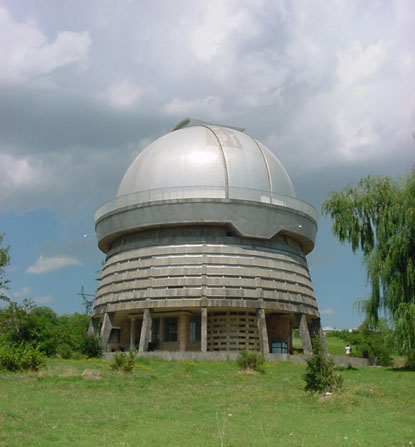
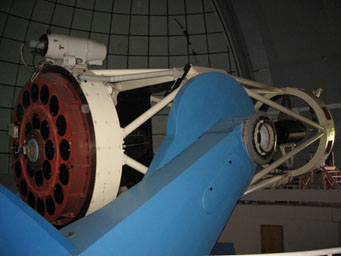
Fig. 1a,b. Dome and 2.6-m-Cassegrain Reflector (Byurakan Astrophysical Observatory)
It is the most important astronomical centre in Eastern Europe and Middle East region, both by its scientific instruments and achievements. The Observatory was founded in 1946 on the initiative of Viktor Amazaspovich Ambartsumian (1908--1996), the first director and famous Armenian scientist of the 20th century. Since 1998 the Byurakan Observatory bears the name of V.A. Ambartsumian.
The erection of the buildings started in 1946 under the supervision of famous architect Samvel Safarian (1902--1969), who was specialist for science buildings. The architectural ensemble of the observatory (1951 to 1955) consists of two telescope towers, laboratory buildings, central building, conference hall, and guest house.
Astronomical Research
V.A. Ambartsumian studied in Leningrad (today St. Petersburg) and started his career in Pulkovo Observatory under Aristarkh Apollonovich Belopolsky (1854--1934), 1928 to 1931. Then in 1934, he founded the first department of astrophysics in the Soviet Union at Leningrad State University (LSU) and was named professor. Since 1943 he became director of the small Yerevan Astronomical Observatory of Yerevan State University. In 1946 he founded the Byurakan Astrophysical Observatory, built from 1951 to 1956. In 1946, Ambartsumian founded the Communications of the Byurakan Observatory and in 1965, the journal Astrofizika and he served also as editor for over 20 years.
In the mid-50s he gave a new explanation for radiogalaxies radiation and proposed a new conception on the activity of galactic nuclei. By the time, it was accepted by all the astronomers, and at present most of the astrophysical observatories have the subject of Active Galactic Nuclei (AGN) as one of their main research areas. The discovery of stellar associations (1947), flare stars, supernovae, and Herbig-Haro objects.
Ambartsumian’s idea about activity of galactic nuclei, as well as investigations on radiation transfer theory, based on his principle of invariance, elucidated the further development of the research activities in Byurakan Observatory.
In 1963, Benjamin Egishevitch Markarian (1913-1985) discovered a group of active galaxies with nuclei with strong ultraviolet emissions (First Byurakan Survey -- FBS). With the 1-m-Schmidt Telescope he started in 1965 a survey and a Second Byurakan Survey, 1974 to 1991 (MARKARIAN2 -- Markarian Galaxies Optical Database).
Edward Yerem Khachikian’s work is related to gas-dust (1955--1968) and cometary nebulae, polarization of radiation of nebulae, stellar associations and superassociations, extragalactic astronomy, active galaxies, and Markarian and Seyfert galaxies (Atlas of Seyfert Galaxies, with Daniel Weedman, 1974).
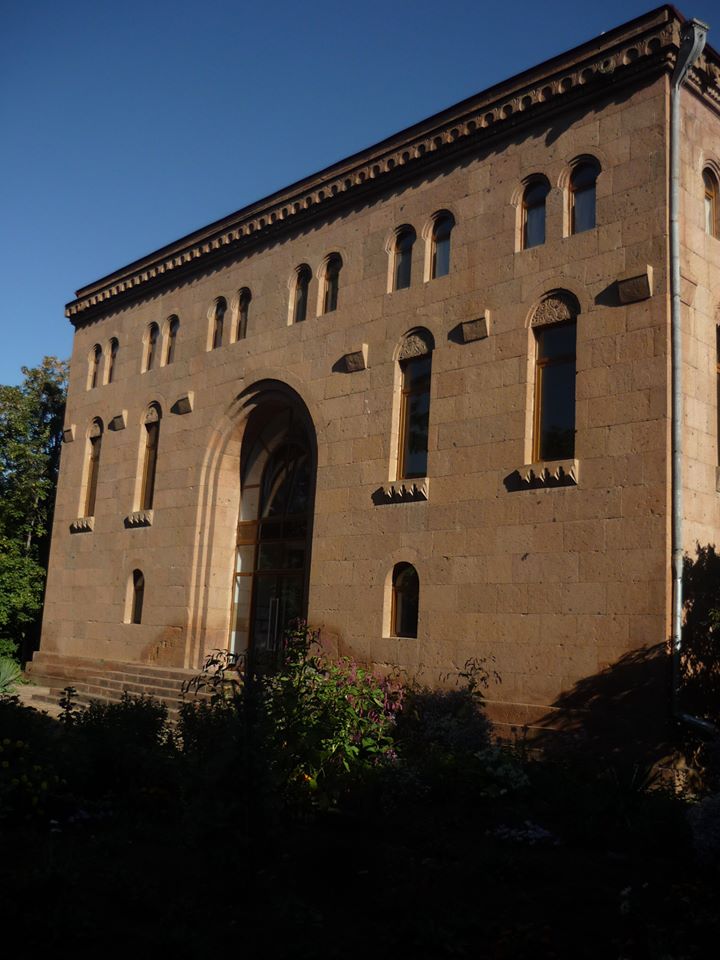
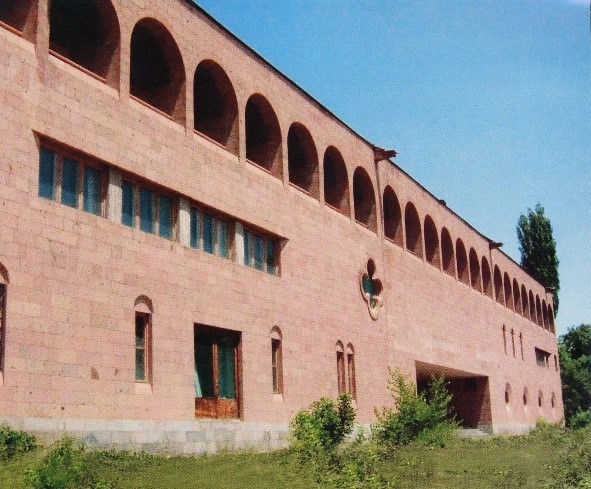
Fig. 2a,b. Main Building and new Laboratory Building (Areg Mickaelian)
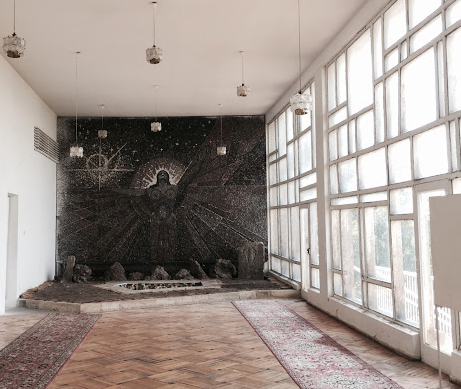

Fig. 3a,b. Conference Hall and Guest House (Areg Mickaelian)
Byurakan Observatory organized many international astronomical meetings and the astronomers were active in the International Astronomical Union (IAU): V.A. Ambartsumian was IAU President in 1961--1964 and Vice-President in 1948--1955, B.E. Markarian and E.Ye. Khachikian were Presidents of IAU Commission No. 28 (Galaxies, 1991--1994).
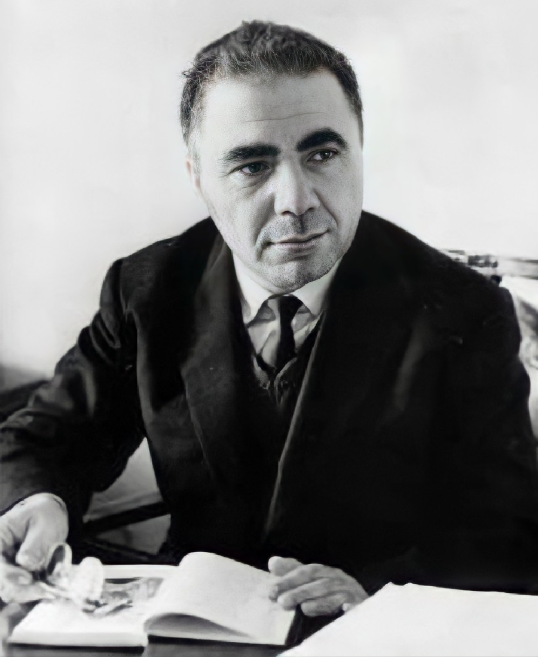
Fig. 3c. Viktor Amazaspovich Ambartsumian (1908--1996), 1968 (Wikipedia CC 2.5)
History - InfoTheme: Astronomy from the Renaissance to the mid-twentieth century
Entity: 162
Subentity: 1
Version: 10
Status: PUB
Date: 2022-04-08 18:32:43
Author(s): Gudrun Wolfschmidt
Directors of Byurakan Astrophysical Observatory
- Viktor Amazaspovich Ambartsumian (1908--1996), 1946 to 1988
- Edward Yerem Khachikian (1928--2018), 1988 to 1993, 1999 to 2003
- Artashes Ruben Petrosian (*1952), 1994 to 1999
- Hayk Avag Harutyunyan (*1951), 1993 to 1994, 2003 until 2016
- Areg Mickaelian, since 2017
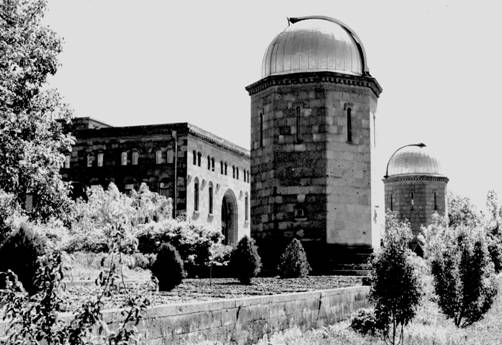
Fig. 4a. 40-cm-Reflector (Byurakan Astrophysical Observatory, Areg Mickaelian)
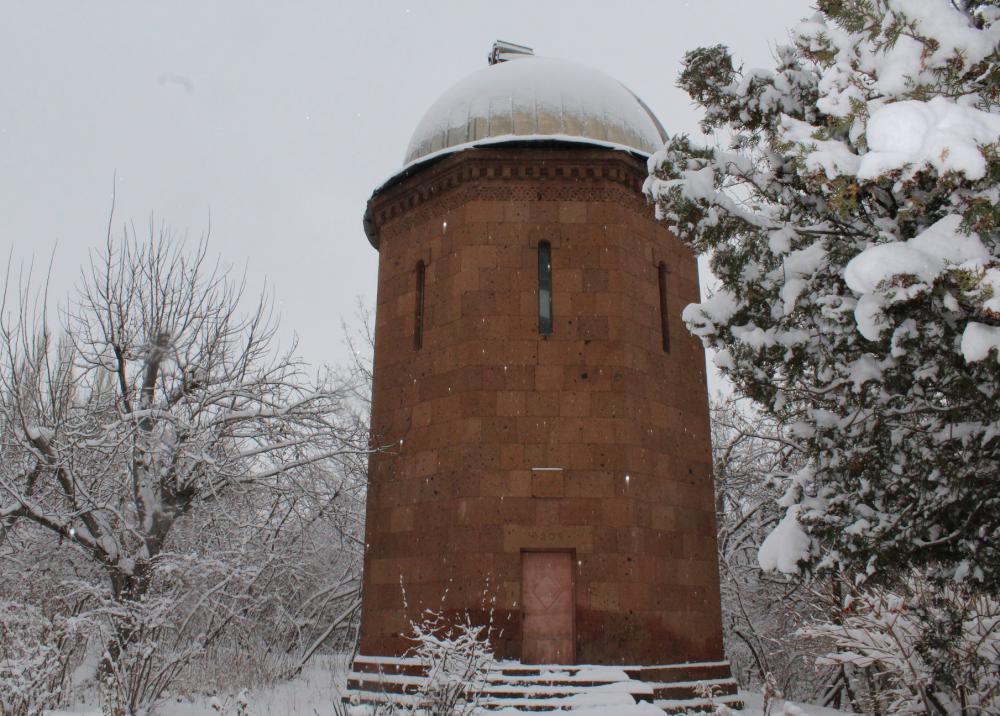
Fig. 4b. 50-cm-Reflector (Byurakan Astrophysical Observatory, Areg Mickaelian)
Early Instrumentation
The first astronomical instruments are from 1951 to 1955.
- 5’’ double astrograph,
- 20cm Schmidt telescope (8’’/12’’ Schmidt telescope),
- 10’’ telescope-spectrograph, nebular spectrograph,
- 40cm reflector (16’’ Cassegrain telescope)
- 50cm reflector
- 53/53/180cm Schmidt telescope (21’’/21’’)
The 53-cm-Schmidt telescope was the main instrument for those years, being used for the investigation of structure and radiation properties of galaxies.
In 1950--1951 the laboratories of instrument-making, radioastrophysics, stellar astronomy and spectroscopy, as well as observatory’s library were organized.
Since 1950 also radiotelescopes were constructed. Two synphased antennas for observations in 4.2m wavelength and two synphased antennas for 1.5m wavelength were constructed.
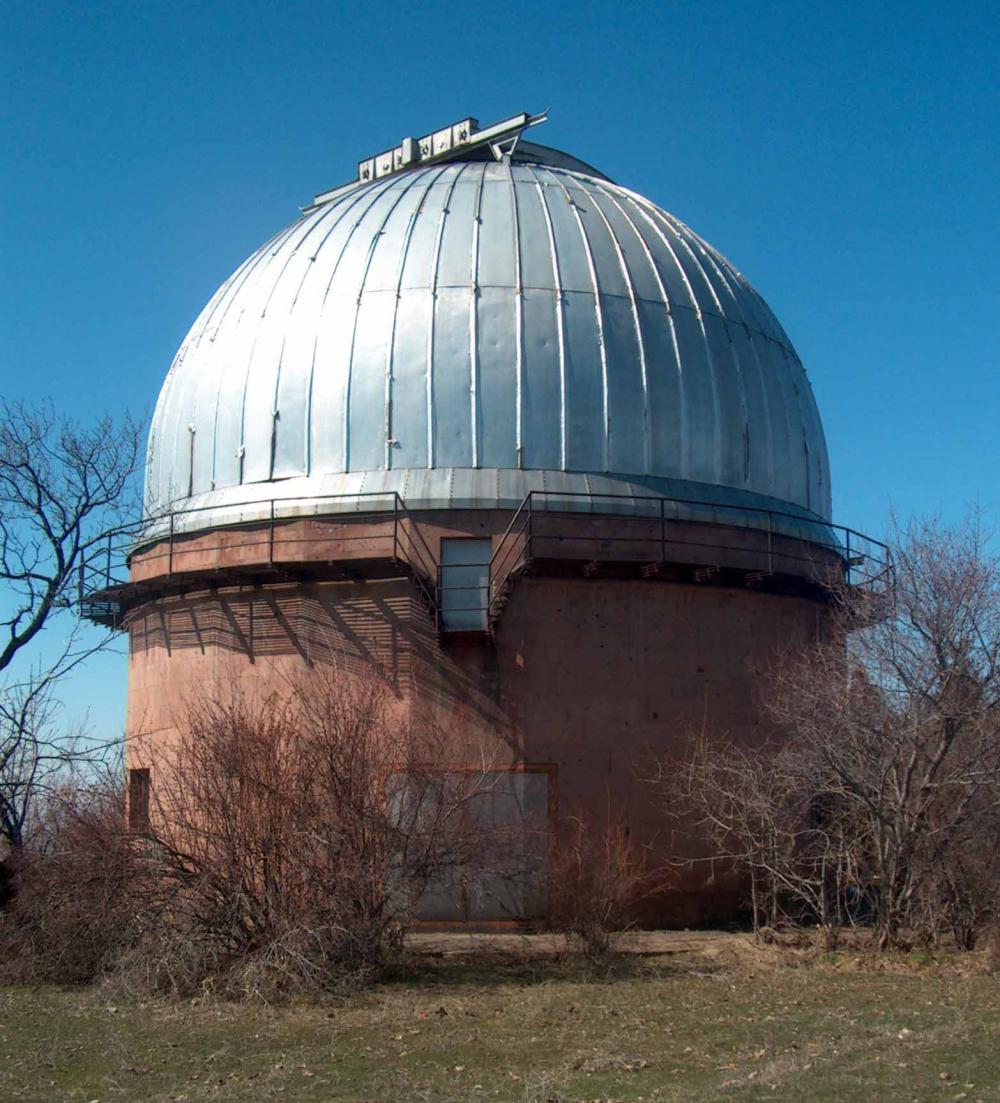
Fig. 5a. Dome of the 1-m-Schmidt Telescope (Areg Mickaelian, Byurakan Astrophysical Observatory)
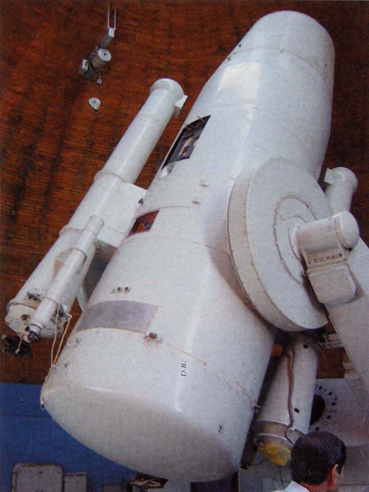
Fig. 5b. 1-m-Schmidt Telescope (Areg Mickaelian, Byurakan Astrophysical Observatory)
Main Instruments since the 1960s
- ZTA-2.6 -- 2.6m Cassegrain Nasmyth Coudé Reflector, LOMO
(equipped with ByuFOSC and SCORPIO focal reducers, and VAGR multi-pupil spectrograph), - 102/132/213cm large Schmidt telescope, Carl Zeiss of Jena (1960)
- PDS-1010A microdensitometer.
Archives and Databases
BAO has a big archive of photographic plates, including the Byurakan Surveys, 2650 plates, containing information on some 20,000,000 low-dispersion spectra of objects of the whole Northern sky and a part of the Southern sky at high galactic latitudes (|b|>15), over an area of 17,000 deg2.
- BAO photographic archive
- Digitized First Byurakan Survey (DFBS) - First Byurakan Survey (FBS or Markarian survey). UNESCO / Memory of the World -- Register, 2013, http://www.unesco.org/new/en/communication-and-information/flagship-project-activities/memory-of-the-world/register/full-list-of-registered-heritage/registered-heritage-page-3/first-byurakan-survey-fbs-or-markarian-survey/#c211216
(9.3.2021). - Armenian Virtual Observatory (ArVO).
State of preservation - InfoTheme: Astronomy from the Renaissance to the mid-twentieth century
Entity: 162
Subentity: 1
Version: 2
Status: PUB
Date: 2022-04-08 18:40:59
Author(s): Gudrun Wolfschmidt
- Republic of Armenia (RA) National Value recognized by the RA Government in 2013
- IAU South West and Central Asian Regional Office of Astronomy for Development (IAU SWCA ROAD), founded in 2015
- UNESCO Heritage Item of the Byurakan Astrophysical Observatory: Markarian Survey, included in 2011 in UNESCO "Memory of the World" Documentary Heritage International Register
- BAO hosts Armenian National Hero Viktor Ambartsumian House-Museum
- BAO Territory is recognized as an Arboretum by the RA Ministry of Ecology in 2017
- BAO is recognized by the Armenian Institute of Tourism as Scientific Tourism Center and by IAU as Astronomical Tourism Centre
Comparison with related/similar sites - InfoTheme: Astronomy from the Renaissance to the mid-twentieth century
Entity: 162
Subentity: 1
Version: 2
Status: PUB
Date: 2021-03-09 05:13:51
Author(s): Gudrun Wolfschmidt
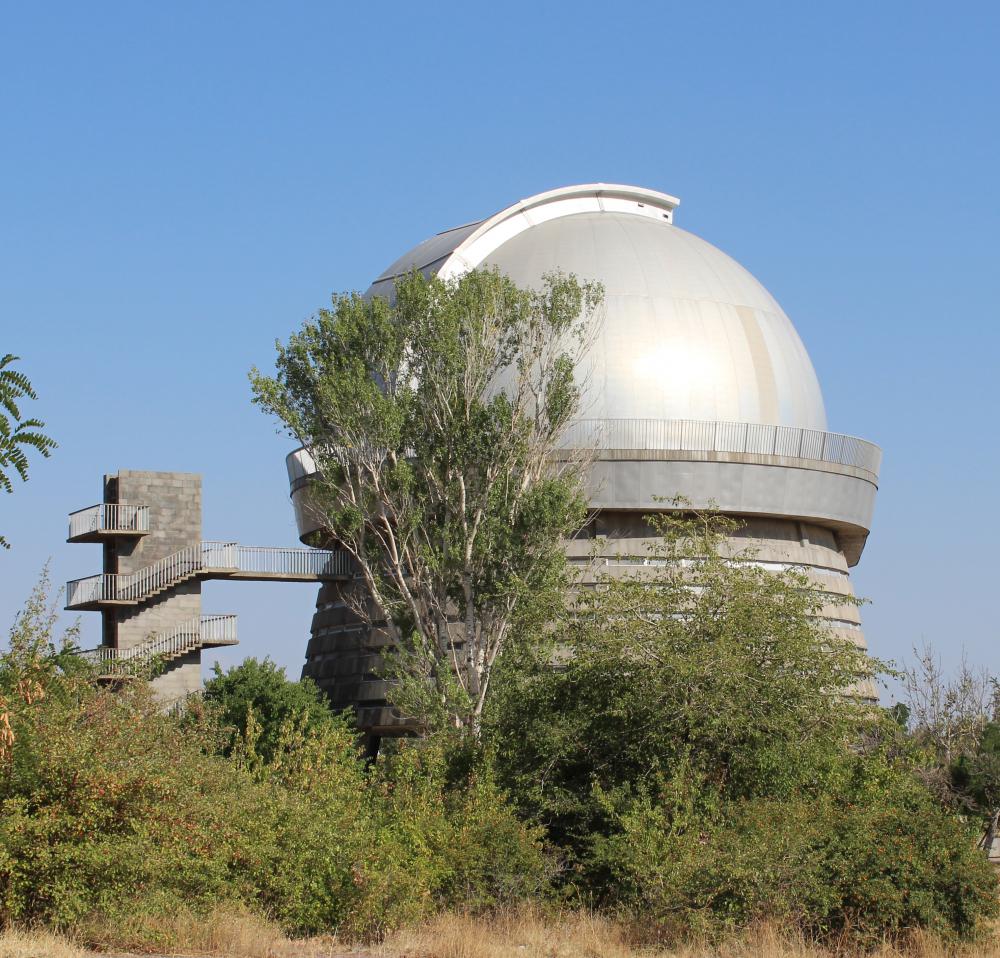
Fig. 6. Dome of the 2.6-m-Cassegrain Reflector (Martina Kölbl-Ebert)
Threats or potential threats - InfoTheme: Astronomy from the Renaissance to the mid-twentieth century
Entity: 162
Subentity: 1
Version: 1
Status: PUB
Date: 2021-03-09 01:39:54
Author(s): Gudrun Wolfschmidt
no information available
Present use - InfoTheme: Astronomy from the Renaissance to the mid-twentieth century
Entity: 162
Subentity: 1
Version: 2
Status: PUB
Date: 2021-03-09 04:11:45
Author(s): Gudrun Wolfschmidt
Observatory is still in use
Astronomical relevance today - InfoTheme: Astronomy from the Renaissance to the mid-twentieth century
Entity: 162
Subentity: 1
Version: 2
Status: PUB
Date: 2021-03-09 04:12:24
Author(s): Gudrun Wolfschmidt
Very active observatory with many international relationships (France, Germany, Italy, UK, Spain, Russia, USA, Mexico, Japan, China, India, and other countries)
References
Bibliography (books and published articles) - InfoTheme: Astronomy from the Renaissance to the mid-twentieth century
Entity: 162
Subentity: 1
Version: 4
Status: PUB
Date: 2022-04-08 18:34:25
Author(s): Gudrun Wolfschmidt
- Mickaelian A.M.: The Byurakan Observatory. Yerevan: Edit Print 2008 (48p.).
- Petrosian, A.; McLean, B.; Allen, R. J.; MacKenty, J. W. (May 2007): Markarian Galaxies. I. The Optical Database and Atlas. In: The Astrophysical Journal Supplement Series. 170 (2007), 1, p. 33--70.
Bibcode:2007ApJS..170...33P. doi:10.1086/511333. - Mickaelian, A. M. (Ed.), Byurakan Astrophysical Observatory: 75 years of outstanding achievements, Yerevan, "Edit Print" Publishing Company, 2021, 464 p․
- Link to books published about the BAO
Links to external sites - InfoTheme: Astronomy from the Renaissance to the mid-twentieth century
Entity: 162
Subentity: 1
Version: 6
Status: PUB
Date: 2022-04-08 18:37:23
Author(s): Gudrun Wolfschmidt
- Byurakan Astrophysical Observatory (BAO) website
- History of the Byurakan Astrophysical Observatory
- https://ambartsumian.sci.am/index.php
- The Armenian Astronomical Society
- The South West and Central Asia Regional Office of Astronomy for Development (SWCA ROAD)
- Astronomical Tourism - South West and Central Asia
Links to external on-line pictures - InfoTheme: Astronomy from the Renaissance to the mid-twentieth century
Entity: 162
Subentity: 1
Version: 3
Status: PUB
Date: 2022-10-13 14:08:28
Author(s): Gudrun Wolfschmidt
PrintPrint contents of 'Description' tab
(opens in a new window) Theme
Astronomy from the Renaissance to the mid-twentieth century
Case Study Navigation
- InfoTheme: Astronomy from the Renaissance to the mid-twentieth century
Entity: 162
Subentity: 1
Version: 2
Status: PUB
Date: 2021-03-09 04:07:41
Author(s): Gudrun Wolfschmidt
Byurakan Astrophysical Observatory (BAO), Mount Aragats, 30 km NW to Yerevan,
Armenian National Academy of Sciences (NAS RA),
Byurakan 0213, Aragatzotn province, Armenia
Location - InfoTheme: Astronomy from the Renaissance to the mid-twentieth century
Entity: 162
Subentity: 1
Version: 2
Status: PUB
Date: 2021-03-09 04:09:21
Author(s): Gudrun Wolfschmidt
Latitude 40°20’07’’ N, Longitude 2h57m10s E. Elevation 1405m above mean sea level.
IAU observatory code - InfoTheme: Astronomy from the Renaissance to the mid-twentieth century
Entity: 162
Subentity: 1
Version: 1
Status: PUB
Date: 2021-03-09 01:39:54
Author(s): Gudrun Wolfschmidt
123
Description of (scientific/cultural/natural) heritage - InfoTheme: Astronomy from the Renaissance to the mid-twentieth century
Entity: 162
Subentity: 1
Version: 5
Status: PUB
Date: 2021-05-16 15:25:10
Author(s): Gudrun Wolfschmidt


Fig. 1a,b. Dome and 2.6-m-Cassegrain Reflector (Byurakan Astrophysical Observatory)
It is the most important astronomical centre in Eastern Europe and Middle East region, both by its scientific instruments and achievements. The Observatory was founded in 1946 on the initiative of Viktor Amazaspovich Ambartsumian (1908--1996), the first director and famous Armenian scientist of the 20th century. Since 1998 the Byurakan Observatory bears the name of V.A. Ambartsumian.
The erection of the buildings started in 1946 under the supervision of famous architect Samvel Safarian (1902--1969), who was specialist for science buildings. The architectural ensemble of the observatory (1951 to 1955) consists of two telescope towers, laboratory buildings, central building, conference hall, and guest house.
Astronomical Research
V.A. Ambartsumian studied in Leningrad (today St. Petersburg) and started his career in Pulkovo Observatory under Aristarkh Apollonovich Belopolsky (1854--1934), 1928 to 1931. Then in 1934, he founded the first department of astrophysics in the Soviet Union at Leningrad State University (LSU) and was named professor. Since 1943 he became director of the small Yerevan Astronomical Observatory of Yerevan State University. In 1946 he founded the Byurakan Astrophysical Observatory, built from 1951 to 1956. In 1946, Ambartsumian founded the Communications of the Byurakan Observatory and in 1965, the journal Astrofizika and he served also as editor for over 20 years.
In the mid-50s he gave a new explanation for radiogalaxies radiation and proposed a new conception on the activity of galactic nuclei. By the time, it was accepted by all the astronomers, and at present most of the astrophysical observatories have the subject of Active Galactic Nuclei (AGN) as one of their main research areas. The discovery of stellar associations (1947), flare stars, supernovae, and Herbig-Haro objects.
Ambartsumian’s idea about activity of galactic nuclei, as well as investigations on radiation transfer theory, based on his principle of invariance, elucidated the further development of the research activities in Byurakan Observatory.
In 1963, Benjamin Egishevitch Markarian (1913-1985) discovered a group of active galaxies with nuclei with strong ultraviolet emissions (First Byurakan Survey -- FBS). With the 1-m-Schmidt Telescope he started in 1965 a survey and a Second Byurakan Survey, 1974 to 1991 (MARKARIAN2 -- Markarian Galaxies Optical Database).
Edward Yerem Khachikian’s work is related to gas-dust (1955--1968) and cometary nebulae, polarization of radiation of nebulae, stellar associations and superassociations, extragalactic astronomy, active galaxies, and Markarian and Seyfert galaxies (Atlas of Seyfert Galaxies, with Daniel Weedman, 1974).


Fig. 2a,b. Main Building and new Laboratory Building (Areg Mickaelian)


Fig. 3a,b. Conference Hall and Guest House (Areg Mickaelian)
Byurakan Observatory organized many international astronomical meetings and the astronomers were active in the International Astronomical Union (IAU): V.A. Ambartsumian was IAU President in 1961--1964 and Vice-President in 1948--1955, B.E. Markarian and E.Ye. Khachikian were Presidents of IAU Commission No. 28 (Galaxies, 1991--1994).

Fig. 3c. Viktor Amazaspovich Ambartsumian (1908--1996), 1968 (Wikipedia CC 2.5)
History - InfoTheme: Astronomy from the Renaissance to the mid-twentieth century
Entity: 162
Subentity: 1
Version: 10
Status: PUB
Date: 2022-04-08 18:32:43
Author(s): Gudrun Wolfschmidt
Directors of Byurakan Astrophysical Observatory
- Viktor Amazaspovich Ambartsumian (1908--1996), 1946 to 1988
- Edward Yerem Khachikian (1928--2018), 1988 to 1993, 1999 to 2003
- Artashes Ruben Petrosian (*1952), 1994 to 1999
- Hayk Avag Harutyunyan (*1951), 1993 to 1994, 2003 until 2016
- Areg Mickaelian, since 2017

Fig. 4a. 40-cm-Reflector (Byurakan Astrophysical Observatory, Areg Mickaelian)

Fig. 4b. 50-cm-Reflector (Byurakan Astrophysical Observatory, Areg Mickaelian)
Early Instrumentation
The first astronomical instruments are from 1951 to 1955.
- 5’’ double astrograph,
- 20cm Schmidt telescope (8’’/12’’ Schmidt telescope),
- 10’’ telescope-spectrograph, nebular spectrograph,
- 40cm reflector (16’’ Cassegrain telescope)
- 50cm reflector
- 53/53/180cm Schmidt telescope (21’’/21’’)
The 53-cm-Schmidt telescope was the main instrument for those years, being used for the investigation of structure and radiation properties of galaxies.
In 1950--1951 the laboratories of instrument-making, radioastrophysics, stellar astronomy and spectroscopy, as well as observatory’s library were organized.
Since 1950 also radiotelescopes were constructed. Two synphased antennas for observations in 4.2m wavelength and two synphased antennas for 1.5m wavelength were constructed.

Fig. 5a. Dome of the 1-m-Schmidt Telescope (Areg Mickaelian, Byurakan Astrophysical Observatory)

Fig. 5b. 1-m-Schmidt Telescope (Areg Mickaelian, Byurakan Astrophysical Observatory)
Main Instruments since the 1960s
- ZTA-2.6 -- 2.6m Cassegrain Nasmyth Coudé Reflector, LOMO
(equipped with ByuFOSC and SCORPIO focal reducers, and VAGR multi-pupil spectrograph), - 102/132/213cm large Schmidt telescope, Carl Zeiss of Jena (1960)
- PDS-1010A microdensitometer.
Archives and Databases
BAO has a big archive of photographic plates, including the Byurakan Surveys, 2650 plates, containing information on some 20,000,000 low-dispersion spectra of objects of the whole Northern sky and a part of the Southern sky at high galactic latitudes (|b|>15), over an area of 17,000 deg2.
- BAO photographic archive
- Digitized First Byurakan Survey (DFBS) - First Byurakan Survey (FBS or Markarian survey). UNESCO / Memory of the World -- Register, 2013, http://www.unesco.org/new/en/communication-and-information/flagship-project-activities/memory-of-the-world/register/full-list-of-registered-heritage/registered-heritage-page-3/first-byurakan-survey-fbs-or-markarian-survey/#c211216
(9.3.2021). - Armenian Virtual Observatory (ArVO).
State of preservation - InfoTheme: Astronomy from the Renaissance to the mid-twentieth century
Entity: 162
Subentity: 1
Version: 2
Status: PUB
Date: 2022-04-08 18:40:59
Author(s): Gudrun Wolfschmidt
- Republic of Armenia (RA) National Value recognized by the RA Government in 2013
- IAU South West and Central Asian Regional Office of Astronomy for Development (IAU SWCA ROAD), founded in 2015
- UNESCO Heritage Item of the Byurakan Astrophysical Observatory: Markarian Survey, included in 2011 in UNESCO "Memory of the World" Documentary Heritage International Register
- BAO hosts Armenian National Hero Viktor Ambartsumian House-Museum
- BAO Territory is recognized as an Arboretum by the RA Ministry of Ecology in 2017
- BAO is recognized by the Armenian Institute of Tourism as Scientific Tourism Center and by IAU as Astronomical Tourism Centre
Comparison with related/similar sites - InfoTheme: Astronomy from the Renaissance to the mid-twentieth century
Entity: 162
Subentity: 1
Version: 2
Status: PUB
Date: 2021-03-09 05:13:51
Author(s): Gudrun Wolfschmidt

Fig. 6. Dome of the 2.6-m-Cassegrain Reflector (Martina Kölbl-Ebert)
Threats or potential threats - InfoTheme: Astronomy from the Renaissance to the mid-twentieth century
Entity: 162
Subentity: 1
Version: 1
Status: PUB
Date: 2021-03-09 01:39:54
Author(s): Gudrun Wolfschmidt
no information available
Present use - InfoTheme: Astronomy from the Renaissance to the mid-twentieth century
Entity: 162
Subentity: 1
Version: 2
Status: PUB
Date: 2021-03-09 04:11:45
Author(s): Gudrun Wolfschmidt
Observatory is still in use
Astronomical relevance today - InfoTheme: Astronomy from the Renaissance to the mid-twentieth century
Entity: 162
Subentity: 1
Version: 2
Status: PUB
Date: 2021-03-09 04:12:24
Author(s): Gudrun Wolfschmidt
Very active observatory with many international relationships (France, Germany, Italy, UK, Spain, Russia, USA, Mexico, Japan, China, India, and other countries)
References
Bibliography (books and published articles) - InfoTheme: Astronomy from the Renaissance to the mid-twentieth century
Entity: 162
Subentity: 1
Version: 4
Status: PUB
Date: 2022-04-08 18:34:25
Author(s): Gudrun Wolfschmidt
- Mickaelian A.M.: The Byurakan Observatory. Yerevan: Edit Print 2008 (48p.).
- Petrosian, A.; McLean, B.; Allen, R. J.; MacKenty, J. W. (May 2007): Markarian Galaxies. I. The Optical Database and Atlas. In: The Astrophysical Journal Supplement Series. 170 (2007), 1, p. 33--70.
Bibcode:2007ApJS..170...33P. doi:10.1086/511333. - Mickaelian, A. M. (Ed.), Byurakan Astrophysical Observatory: 75 years of outstanding achievements, Yerevan, "Edit Print" Publishing Company, 2021, 464 p․
- Link to books published about the BAO
Links to external sites - InfoTheme: Astronomy from the Renaissance to the mid-twentieth century
Entity: 162
Subentity: 1
Version: 6
Status: PUB
Date: 2022-04-08 18:37:23
Author(s): Gudrun Wolfschmidt
- Byurakan Astrophysical Observatory (BAO) website
- History of the Byurakan Astrophysical Observatory
- https://ambartsumian.sci.am/index.php
- The Armenian Astronomical Society
- The South West and Central Asia Regional Office of Astronomy for Development (SWCA ROAD)
- Astronomical Tourism - South West and Central Asia
Links to external on-line pictures - InfoTheme: Astronomy from the Renaissance to the mid-twentieth century
Entity: 162
Subentity: 1
Version: 3
Status: PUB
Date: 2022-10-13 14:08:28
Author(s): Gudrun Wolfschmidt
PrintPrint contents of 'Description' tab
(opens in a new window) Theme
Astronomy from the Renaissance to the mid-twentieth century
Case Study Navigation
- InfoTheme: Astronomy from the Renaissance to the mid-twentieth century
Entity: 162
Subentity: 1
Version: 2
Status: PUB
Date: 2021-03-09 04:09:21
Author(s): Gudrun Wolfschmidt
Latitude 40°20’07’’ N, Longitude 2h57m10s E. Elevation 1405m above mean sea level.
IAU observatory code - InfoTheme: Astronomy from the Renaissance to the mid-twentieth century
Entity: 162
Subentity: 1
Version: 1
Status: PUB
Date: 2021-03-09 01:39:54
Author(s): Gudrun Wolfschmidt
123
Description of (scientific/cultural/natural) heritage - InfoTheme: Astronomy from the Renaissance to the mid-twentieth century
Entity: 162
Subentity: 1
Version: 5
Status: PUB
Date: 2021-05-16 15:25:10
Author(s): Gudrun Wolfschmidt


Fig. 1a,b. Dome and 2.6-m-Cassegrain Reflector (Byurakan Astrophysical Observatory)
It is the most important astronomical centre in Eastern Europe and Middle East region, both by its scientific instruments and achievements. The Observatory was founded in 1946 on the initiative of Viktor Amazaspovich Ambartsumian (1908--1996), the first director and famous Armenian scientist of the 20th century. Since 1998 the Byurakan Observatory bears the name of V.A. Ambartsumian.
The erection of the buildings started in 1946 under the supervision of famous architect Samvel Safarian (1902--1969), who was specialist for science buildings. The architectural ensemble of the observatory (1951 to 1955) consists of two telescope towers, laboratory buildings, central building, conference hall, and guest house.
Astronomical Research
V.A. Ambartsumian studied in Leningrad (today St. Petersburg) and started his career in Pulkovo Observatory under Aristarkh Apollonovich Belopolsky (1854--1934), 1928 to 1931. Then in 1934, he founded the first department of astrophysics in the Soviet Union at Leningrad State University (LSU) and was named professor. Since 1943 he became director of the small Yerevan Astronomical Observatory of Yerevan State University. In 1946 he founded the Byurakan Astrophysical Observatory, built from 1951 to 1956. In 1946, Ambartsumian founded the Communications of the Byurakan Observatory and in 1965, the journal Astrofizika and he served also as editor for over 20 years.
In the mid-50s he gave a new explanation for radiogalaxies radiation and proposed a new conception on the activity of galactic nuclei. By the time, it was accepted by all the astronomers, and at present most of the astrophysical observatories have the subject of Active Galactic Nuclei (AGN) as one of their main research areas. The discovery of stellar associations (1947), flare stars, supernovae, and Herbig-Haro objects.
Ambartsumian’s idea about activity of galactic nuclei, as well as investigations on radiation transfer theory, based on his principle of invariance, elucidated the further development of the research activities in Byurakan Observatory.
In 1963, Benjamin Egishevitch Markarian (1913-1985) discovered a group of active galaxies with nuclei with strong ultraviolet emissions (First Byurakan Survey -- FBS). With the 1-m-Schmidt Telescope he started in 1965 a survey and a Second Byurakan Survey, 1974 to 1991 (MARKARIAN2 -- Markarian Galaxies Optical Database).
Edward Yerem Khachikian’s work is related to gas-dust (1955--1968) and cometary nebulae, polarization of radiation of nebulae, stellar associations and superassociations, extragalactic astronomy, active galaxies, and Markarian and Seyfert galaxies (Atlas of Seyfert Galaxies, with Daniel Weedman, 1974).


Fig. 2a,b. Main Building and new Laboratory Building (Areg Mickaelian)


Fig. 3a,b. Conference Hall and Guest House (Areg Mickaelian)
Byurakan Observatory organized many international astronomical meetings and the astronomers were active in the International Astronomical Union (IAU): V.A. Ambartsumian was IAU President in 1961--1964 and Vice-President in 1948--1955, B.E. Markarian and E.Ye. Khachikian were Presidents of IAU Commission No. 28 (Galaxies, 1991--1994).

Fig. 3c. Viktor Amazaspovich Ambartsumian (1908--1996), 1968 (Wikipedia CC 2.5)
History - InfoTheme: Astronomy from the Renaissance to the mid-twentieth century
Entity: 162
Subentity: 1
Version: 10
Status: PUB
Date: 2022-04-08 18:32:43
Author(s): Gudrun Wolfschmidt
Directors of Byurakan Astrophysical Observatory
- Viktor Amazaspovich Ambartsumian (1908--1996), 1946 to 1988
- Edward Yerem Khachikian (1928--2018), 1988 to 1993, 1999 to 2003
- Artashes Ruben Petrosian (*1952), 1994 to 1999
- Hayk Avag Harutyunyan (*1951), 1993 to 1994, 2003 until 2016
- Areg Mickaelian, since 2017

Fig. 4a. 40-cm-Reflector (Byurakan Astrophysical Observatory, Areg Mickaelian)

Fig. 4b. 50-cm-Reflector (Byurakan Astrophysical Observatory, Areg Mickaelian)
Early Instrumentation
The first astronomical instruments are from 1951 to 1955.
- 5’’ double astrograph,
- 20cm Schmidt telescope (8’’/12’’ Schmidt telescope),
- 10’’ telescope-spectrograph, nebular spectrograph,
- 40cm reflector (16’’ Cassegrain telescope)
- 50cm reflector
- 53/53/180cm Schmidt telescope (21’’/21’’)
The 53-cm-Schmidt telescope was the main instrument for those years, being used for the investigation of structure and radiation properties of galaxies.
In 1950--1951 the laboratories of instrument-making, radioastrophysics, stellar astronomy and spectroscopy, as well as observatory’s library were organized.
Since 1950 also radiotelescopes were constructed. Two synphased antennas for observations in 4.2m wavelength and two synphased antennas for 1.5m wavelength were constructed.

Fig. 5a. Dome of the 1-m-Schmidt Telescope (Areg Mickaelian, Byurakan Astrophysical Observatory)

Fig. 5b. 1-m-Schmidt Telescope (Areg Mickaelian, Byurakan Astrophysical Observatory)
Main Instruments since the 1960s
- ZTA-2.6 -- 2.6m Cassegrain Nasmyth Coudé Reflector, LOMO
(equipped with ByuFOSC and SCORPIO focal reducers, and VAGR multi-pupil spectrograph), - 102/132/213cm large Schmidt telescope, Carl Zeiss of Jena (1960)
- PDS-1010A microdensitometer.
Archives and Databases
BAO has a big archive of photographic plates, including the Byurakan Surveys, 2650 plates, containing information on some 20,000,000 low-dispersion spectra of objects of the whole Northern sky and a part of the Southern sky at high galactic latitudes (|b|>15), over an area of 17,000 deg2.
- BAO photographic archive
- Digitized First Byurakan Survey (DFBS) - First Byurakan Survey (FBS or Markarian survey). UNESCO / Memory of the World -- Register, 2013, http://www.unesco.org/new/en/communication-and-information/flagship-project-activities/memory-of-the-world/register/full-list-of-registered-heritage/registered-heritage-page-3/first-byurakan-survey-fbs-or-markarian-survey/#c211216
(9.3.2021). - Armenian Virtual Observatory (ArVO).
State of preservation - InfoTheme: Astronomy from the Renaissance to the mid-twentieth century
Entity: 162
Subentity: 1
Version: 2
Status: PUB
Date: 2022-04-08 18:40:59
Author(s): Gudrun Wolfschmidt
- Republic of Armenia (RA) National Value recognized by the RA Government in 2013
- IAU South West and Central Asian Regional Office of Astronomy for Development (IAU SWCA ROAD), founded in 2015
- UNESCO Heritage Item of the Byurakan Astrophysical Observatory: Markarian Survey, included in 2011 in UNESCO "Memory of the World" Documentary Heritage International Register
- BAO hosts Armenian National Hero Viktor Ambartsumian House-Museum
- BAO Territory is recognized as an Arboretum by the RA Ministry of Ecology in 2017
- BAO is recognized by the Armenian Institute of Tourism as Scientific Tourism Center and by IAU as Astronomical Tourism Centre
Comparison with related/similar sites - InfoTheme: Astronomy from the Renaissance to the mid-twentieth century
Entity: 162
Subentity: 1
Version: 2
Status: PUB
Date: 2021-03-09 05:13:51
Author(s): Gudrun Wolfschmidt

Fig. 6. Dome of the 2.6-m-Cassegrain Reflector (Martina Kölbl-Ebert)
Threats or potential threats - InfoTheme: Astronomy from the Renaissance to the mid-twentieth century
Entity: 162
Subentity: 1
Version: 1
Status: PUB
Date: 2021-03-09 01:39:54
Author(s): Gudrun Wolfschmidt
no information available
Present use - InfoTheme: Astronomy from the Renaissance to the mid-twentieth century
Entity: 162
Subentity: 1
Version: 2
Status: PUB
Date: 2021-03-09 04:11:45
Author(s): Gudrun Wolfschmidt
Observatory is still in use
Astronomical relevance today - InfoTheme: Astronomy from the Renaissance to the mid-twentieth century
Entity: 162
Subentity: 1
Version: 2
Status: PUB
Date: 2021-03-09 04:12:24
Author(s): Gudrun Wolfschmidt
Very active observatory with many international relationships (France, Germany, Italy, UK, Spain, Russia, USA, Mexico, Japan, China, India, and other countries)
References
Bibliography (books and published articles) - InfoTheme: Astronomy from the Renaissance to the mid-twentieth century
Entity: 162
Subentity: 1
Version: 4
Status: PUB
Date: 2022-04-08 18:34:25
Author(s): Gudrun Wolfschmidt
- Mickaelian A.M.: The Byurakan Observatory. Yerevan: Edit Print 2008 (48p.).
- Petrosian, A.; McLean, B.; Allen, R. J.; MacKenty, J. W. (May 2007): Markarian Galaxies. I. The Optical Database and Atlas. In: The Astrophysical Journal Supplement Series. 170 (2007), 1, p. 33--70.
Bibcode:2007ApJS..170...33P. doi:10.1086/511333. - Mickaelian, A. M. (Ed.), Byurakan Astrophysical Observatory: 75 years of outstanding achievements, Yerevan, "Edit Print" Publishing Company, 2021, 464 p․
- Link to books published about the BAO
Links to external sites - InfoTheme: Astronomy from the Renaissance to the mid-twentieth century
Entity: 162
Subentity: 1
Version: 6
Status: PUB
Date: 2022-04-08 18:37:23
Author(s): Gudrun Wolfschmidt
- Byurakan Astrophysical Observatory (BAO) website
- History of the Byurakan Astrophysical Observatory
- https://ambartsumian.sci.am/index.php
- The Armenian Astronomical Society
- The South West and Central Asia Regional Office of Astronomy for Development (SWCA ROAD)
- Astronomical Tourism - South West and Central Asia
Links to external on-line pictures - InfoTheme: Astronomy from the Renaissance to the mid-twentieth century
Entity: 162
Subentity: 1
Version: 3
Status: PUB
Date: 2022-10-13 14:08:28
Author(s): Gudrun Wolfschmidt
PrintPrint contents of 'Description' tab
(opens in a new window) Theme
Astronomy from the Renaissance to the mid-twentieth century
Case Study Navigation
- InfoTheme: Astronomy from the Renaissance to the mid-twentieth century
Entity: 162
Subentity: 1
Version: 1
Status: PUB
Date: 2021-03-09 01:39:54
Author(s): Gudrun Wolfschmidt
123
Description of (scientific/cultural/natural) heritage - InfoTheme: Astronomy from the Renaissance to the mid-twentieth century
Entity: 162
Subentity: 1
Version: 5
Status: PUB
Date: 2021-05-16 15:25:10
Author(s): Gudrun Wolfschmidt


Fig. 1a,b. Dome and 2.6-m-Cassegrain Reflector (Byurakan Astrophysical Observatory)
It is the most important astronomical centre in Eastern Europe and Middle East region, both by its scientific instruments and achievements. The Observatory was founded in 1946 on the initiative of Viktor Amazaspovich Ambartsumian (1908--1996), the first director and famous Armenian scientist of the 20th century. Since 1998 the Byurakan Observatory bears the name of V.A. Ambartsumian.
The erection of the buildings started in 1946 under the supervision of famous architect Samvel Safarian (1902--1969), who was specialist for science buildings. The architectural ensemble of the observatory (1951 to 1955) consists of two telescope towers, laboratory buildings, central building, conference hall, and guest house.
Astronomical Research
V.A. Ambartsumian studied in Leningrad (today St. Petersburg) and started his career in Pulkovo Observatory under Aristarkh Apollonovich Belopolsky (1854--1934), 1928 to 1931. Then in 1934, he founded the first department of astrophysics in the Soviet Union at Leningrad State University (LSU) and was named professor. Since 1943 he became director of the small Yerevan Astronomical Observatory of Yerevan State University. In 1946 he founded the Byurakan Astrophysical Observatory, built from 1951 to 1956. In 1946, Ambartsumian founded the Communications of the Byurakan Observatory and in 1965, the journal Astrofizika and he served also as editor for over 20 years.
In the mid-50s he gave a new explanation for radiogalaxies radiation and proposed a new conception on the activity of galactic nuclei. By the time, it was accepted by all the astronomers, and at present most of the astrophysical observatories have the subject of Active Galactic Nuclei (AGN) as one of their main research areas. The discovery of stellar associations (1947), flare stars, supernovae, and Herbig-Haro objects.
Ambartsumian’s idea about activity of galactic nuclei, as well as investigations on radiation transfer theory, based on his principle of invariance, elucidated the further development of the research activities in Byurakan Observatory.
In 1963, Benjamin Egishevitch Markarian (1913-1985) discovered a group of active galaxies with nuclei with strong ultraviolet emissions (First Byurakan Survey -- FBS). With the 1-m-Schmidt Telescope he started in 1965 a survey and a Second Byurakan Survey, 1974 to 1991 (MARKARIAN2 -- Markarian Galaxies Optical Database).
Edward Yerem Khachikian’s work is related to gas-dust (1955--1968) and cometary nebulae, polarization of radiation of nebulae, stellar associations and superassociations, extragalactic astronomy, active galaxies, and Markarian and Seyfert galaxies (Atlas of Seyfert Galaxies, with Daniel Weedman, 1974).


Fig. 2a,b. Main Building and new Laboratory Building (Areg Mickaelian)


Fig. 3a,b. Conference Hall and Guest House (Areg Mickaelian)
Byurakan Observatory organized many international astronomical meetings and the astronomers were active in the International Astronomical Union (IAU): V.A. Ambartsumian was IAU President in 1961--1964 and Vice-President in 1948--1955, B.E. Markarian and E.Ye. Khachikian were Presidents of IAU Commission No. 28 (Galaxies, 1991--1994).

Fig. 3c. Viktor Amazaspovich Ambartsumian (1908--1996), 1968 (Wikipedia CC 2.5)
History - InfoTheme: Astronomy from the Renaissance to the mid-twentieth century
Entity: 162
Subentity: 1
Version: 10
Status: PUB
Date: 2022-04-08 18:32:43
Author(s): Gudrun Wolfschmidt
Directors of Byurakan Astrophysical Observatory
- Viktor Amazaspovich Ambartsumian (1908--1996), 1946 to 1988
- Edward Yerem Khachikian (1928--2018), 1988 to 1993, 1999 to 2003
- Artashes Ruben Petrosian (*1952), 1994 to 1999
- Hayk Avag Harutyunyan (*1951), 1993 to 1994, 2003 until 2016
- Areg Mickaelian, since 2017

Fig. 4a. 40-cm-Reflector (Byurakan Astrophysical Observatory, Areg Mickaelian)

Fig. 4b. 50-cm-Reflector (Byurakan Astrophysical Observatory, Areg Mickaelian)
Early Instrumentation
The first astronomical instruments are from 1951 to 1955.
- 5’’ double astrograph,
- 20cm Schmidt telescope (8’’/12’’ Schmidt telescope),
- 10’’ telescope-spectrograph, nebular spectrograph,
- 40cm reflector (16’’ Cassegrain telescope)
- 50cm reflector
- 53/53/180cm Schmidt telescope (21’’/21’’)
The 53-cm-Schmidt telescope was the main instrument for those years, being used for the investigation of structure and radiation properties of galaxies.
In 1950--1951 the laboratories of instrument-making, radioastrophysics, stellar astronomy and spectroscopy, as well as observatory’s library were organized.
Since 1950 also radiotelescopes were constructed. Two synphased antennas for observations in 4.2m wavelength and two synphased antennas for 1.5m wavelength were constructed.

Fig. 5a. Dome of the 1-m-Schmidt Telescope (Areg Mickaelian, Byurakan Astrophysical Observatory)

Fig. 5b. 1-m-Schmidt Telescope (Areg Mickaelian, Byurakan Astrophysical Observatory)
Main Instruments since the 1960s
- ZTA-2.6 -- 2.6m Cassegrain Nasmyth Coudé Reflector, LOMO
(equipped with ByuFOSC and SCORPIO focal reducers, and VAGR multi-pupil spectrograph), - 102/132/213cm large Schmidt telescope, Carl Zeiss of Jena (1960)
- PDS-1010A microdensitometer.
Archives and Databases
BAO has a big archive of photographic plates, including the Byurakan Surveys, 2650 plates, containing information on some 20,000,000 low-dispersion spectra of objects of the whole Northern sky and a part of the Southern sky at high galactic latitudes (|b|>15), over an area of 17,000 deg2.
- BAO photographic archive
- Digitized First Byurakan Survey (DFBS) - First Byurakan Survey (FBS or Markarian survey). UNESCO / Memory of the World -- Register, 2013, http://www.unesco.org/new/en/communication-and-information/flagship-project-activities/memory-of-the-world/register/full-list-of-registered-heritage/registered-heritage-page-3/first-byurakan-survey-fbs-or-markarian-survey/#c211216
(9.3.2021). - Armenian Virtual Observatory (ArVO).
State of preservation - InfoTheme: Astronomy from the Renaissance to the mid-twentieth century
Entity: 162
Subentity: 1
Version: 2
Status: PUB
Date: 2022-04-08 18:40:59
Author(s): Gudrun Wolfschmidt
- Republic of Armenia (RA) National Value recognized by the RA Government in 2013
- IAU South West and Central Asian Regional Office of Astronomy for Development (IAU SWCA ROAD), founded in 2015
- UNESCO Heritage Item of the Byurakan Astrophysical Observatory: Markarian Survey, included in 2011 in UNESCO "Memory of the World" Documentary Heritage International Register
- BAO hosts Armenian National Hero Viktor Ambartsumian House-Museum
- BAO Territory is recognized as an Arboretum by the RA Ministry of Ecology in 2017
- BAO is recognized by the Armenian Institute of Tourism as Scientific Tourism Center and by IAU as Astronomical Tourism Centre
Comparison with related/similar sites - InfoTheme: Astronomy from the Renaissance to the mid-twentieth century
Entity: 162
Subentity: 1
Version: 2
Status: PUB
Date: 2021-03-09 05:13:51
Author(s): Gudrun Wolfschmidt

Fig. 6. Dome of the 2.6-m-Cassegrain Reflector (Martina Kölbl-Ebert)
Threats or potential threats - InfoTheme: Astronomy from the Renaissance to the mid-twentieth century
Entity: 162
Subentity: 1
Version: 1
Status: PUB
Date: 2021-03-09 01:39:54
Author(s): Gudrun Wolfschmidt
no information available
Present use - InfoTheme: Astronomy from the Renaissance to the mid-twentieth century
Entity: 162
Subentity: 1
Version: 2
Status: PUB
Date: 2021-03-09 04:11:45
Author(s): Gudrun Wolfschmidt
Observatory is still in use
Astronomical relevance today - InfoTheme: Astronomy from the Renaissance to the mid-twentieth century
Entity: 162
Subentity: 1
Version: 2
Status: PUB
Date: 2021-03-09 04:12:24
Author(s): Gudrun Wolfschmidt
Very active observatory with many international relationships (France, Germany, Italy, UK, Spain, Russia, USA, Mexico, Japan, China, India, and other countries)
References
Bibliography (books and published articles) - InfoTheme: Astronomy from the Renaissance to the mid-twentieth century
Entity: 162
Subentity: 1
Version: 4
Status: PUB
Date: 2022-04-08 18:34:25
Author(s): Gudrun Wolfschmidt
- Mickaelian A.M.: The Byurakan Observatory. Yerevan: Edit Print 2008 (48p.).
- Petrosian, A.; McLean, B.; Allen, R. J.; MacKenty, J. W. (May 2007): Markarian Galaxies. I. The Optical Database and Atlas. In: The Astrophysical Journal Supplement Series. 170 (2007), 1, p. 33--70.
Bibcode:2007ApJS..170...33P. doi:10.1086/511333. - Mickaelian, A. M. (Ed.), Byurakan Astrophysical Observatory: 75 years of outstanding achievements, Yerevan, "Edit Print" Publishing Company, 2021, 464 p․
- Link to books published about the BAO
Links to external sites - InfoTheme: Astronomy from the Renaissance to the mid-twentieth century
Entity: 162
Subentity: 1
Version: 6
Status: PUB
Date: 2022-04-08 18:37:23
Author(s): Gudrun Wolfschmidt
- Byurakan Astrophysical Observatory (BAO) website
- History of the Byurakan Astrophysical Observatory
- https://ambartsumian.sci.am/index.php
- The Armenian Astronomical Society
- The South West and Central Asia Regional Office of Astronomy for Development (SWCA ROAD)
- Astronomical Tourism - South West and Central Asia
Links to external on-line pictures - InfoTheme: Astronomy from the Renaissance to the mid-twentieth century
Entity: 162
Subentity: 1
Version: 3
Status: PUB
Date: 2022-10-13 14:08:28
Author(s): Gudrun Wolfschmidt
PrintPrint contents of 'Description' tab
(opens in a new window) Theme
Astronomy from the Renaissance to the mid-twentieth century
Case Study Navigation
- InfoTheme: Astronomy from the Renaissance to the mid-twentieth century
Entity: 162
Subentity: 1
Version: 5
Status: PUB
Date: 2021-05-16 15:25:10
Author(s): Gudrun Wolfschmidt


Fig. 1a,b. Dome and 2.6-m-Cassegrain Reflector (Byurakan Astrophysical Observatory)
It is the most important astronomical centre in Eastern Europe and Middle East region, both by its scientific instruments and achievements. The Observatory was founded in 1946 on the initiative of Viktor Amazaspovich Ambartsumian (1908--1996), the first director and famous Armenian scientist of the 20th century. Since 1998 the Byurakan Observatory bears the name of V.A. Ambartsumian.
The erection of the buildings started in 1946 under the supervision of famous architect Samvel Safarian (1902--1969), who was specialist for science buildings. The architectural ensemble of the observatory (1951 to 1955) consists of two telescope towers, laboratory buildings, central building, conference hall, and guest house.
Astronomical Research
V.A. Ambartsumian studied in Leningrad (today St. Petersburg) and started his career in Pulkovo Observatory under Aristarkh Apollonovich Belopolsky (1854--1934), 1928 to 1931. Then in 1934, he founded the first department of astrophysics in the Soviet Union at Leningrad State University (LSU) and was named professor. Since 1943 he became director of the small Yerevan Astronomical Observatory of Yerevan State University. In 1946 he founded the Byurakan Astrophysical Observatory, built from 1951 to 1956. In 1946, Ambartsumian founded the Communications of the Byurakan Observatory and in 1965, the journal Astrofizika and he served also as editor for over 20 years.
In the mid-50s he gave a new explanation for radiogalaxies radiation and proposed a new conception on the activity of galactic nuclei. By the time, it was accepted by all the astronomers, and at present most of the astrophysical observatories have the subject of Active Galactic Nuclei (AGN) as one of their main research areas. The discovery of stellar associations (1947), flare stars, supernovae, and Herbig-Haro objects.
Ambartsumian’s idea about activity of galactic nuclei, as well as investigations on radiation transfer theory, based on his principle of invariance, elucidated the further development of the research activities in Byurakan Observatory.
In 1963, Benjamin Egishevitch Markarian (1913-1985) discovered a group of active galaxies with nuclei with strong ultraviolet emissions (First Byurakan Survey -- FBS). With the 1-m-Schmidt Telescope he started in 1965 a survey and a Second Byurakan Survey, 1974 to 1991 (MARKARIAN2 -- Markarian Galaxies Optical Database).
Edward Yerem Khachikian’s work is related to gas-dust (1955--1968) and cometary nebulae, polarization of radiation of nebulae, stellar associations and superassociations, extragalactic astronomy, active galaxies, and Markarian and Seyfert galaxies (Atlas of Seyfert Galaxies, with Daniel Weedman, 1974).


Fig. 2a,b. Main Building and new Laboratory Building (Areg Mickaelian)


Fig. 3a,b. Conference Hall and Guest House (Areg Mickaelian)
Byurakan Observatory organized many international astronomical meetings and the astronomers were active in the International Astronomical Union (IAU): V.A. Ambartsumian was IAU President in 1961--1964 and Vice-President in 1948--1955, B.E. Markarian and E.Ye. Khachikian were Presidents of IAU Commission No. 28 (Galaxies, 1991--1994).

Fig. 3c. Viktor Amazaspovich Ambartsumian (1908--1996), 1968 (Wikipedia CC 2.5)
History - InfoTheme: Astronomy from the Renaissance to the mid-twentieth century
Entity: 162
Subentity: 1
Version: 10
Status: PUB
Date: 2022-04-08 18:32:43
Author(s): Gudrun Wolfschmidt
Directors of Byurakan Astrophysical Observatory
- Viktor Amazaspovich Ambartsumian (1908--1996), 1946 to 1988
- Edward Yerem Khachikian (1928--2018), 1988 to 1993, 1999 to 2003
- Artashes Ruben Petrosian (*1952), 1994 to 1999
- Hayk Avag Harutyunyan (*1951), 1993 to 1994, 2003 until 2016
- Areg Mickaelian, since 2017

Fig. 4a. 40-cm-Reflector (Byurakan Astrophysical Observatory, Areg Mickaelian)

Fig. 4b. 50-cm-Reflector (Byurakan Astrophysical Observatory, Areg Mickaelian)
Early Instrumentation
The first astronomical instruments are from 1951 to 1955.
- 5’’ double astrograph,
- 20cm Schmidt telescope (8’’/12’’ Schmidt telescope),
- 10’’ telescope-spectrograph, nebular spectrograph,
- 40cm reflector (16’’ Cassegrain telescope)
- 50cm reflector
- 53/53/180cm Schmidt telescope (21’’/21’’)
The 53-cm-Schmidt telescope was the main instrument for those years, being used for the investigation of structure and radiation properties of galaxies.
In 1950--1951 the laboratories of instrument-making, radioastrophysics, stellar astronomy and spectroscopy, as well as observatory’s library were organized.
Since 1950 also radiotelescopes were constructed. Two synphased antennas for observations in 4.2m wavelength and two synphased antennas for 1.5m wavelength were constructed.

Fig. 5a. Dome of the 1-m-Schmidt Telescope (Areg Mickaelian, Byurakan Astrophysical Observatory)

Fig. 5b. 1-m-Schmidt Telescope (Areg Mickaelian, Byurakan Astrophysical Observatory)
Main Instruments since the 1960s
- ZTA-2.6 -- 2.6m Cassegrain Nasmyth Coudé Reflector, LOMO
(equipped with ByuFOSC and SCORPIO focal reducers, and VAGR multi-pupil spectrograph), - 102/132/213cm large Schmidt telescope, Carl Zeiss of Jena (1960)
- PDS-1010A microdensitometer.
Archives and Databases
BAO has a big archive of photographic plates, including the Byurakan Surveys, 2650 plates, containing information on some 20,000,000 low-dispersion spectra of objects of the whole Northern sky and a part of the Southern sky at high galactic latitudes (|b|>15), over an area of 17,000 deg2.
- BAO photographic archive
- Digitized First Byurakan Survey (DFBS) - First Byurakan Survey (FBS or Markarian survey). UNESCO / Memory of the World -- Register, 2013, http://www.unesco.org/new/en/communication-and-information/flagship-project-activities/memory-of-the-world/register/full-list-of-registered-heritage/registered-heritage-page-3/first-byurakan-survey-fbs-or-markarian-survey/#c211216
(9.3.2021). - Armenian Virtual Observatory (ArVO).
State of preservation - InfoTheme: Astronomy from the Renaissance to the mid-twentieth century
Entity: 162
Subentity: 1
Version: 2
Status: PUB
Date: 2022-04-08 18:40:59
Author(s): Gudrun Wolfschmidt
- Republic of Armenia (RA) National Value recognized by the RA Government in 2013
- IAU South West and Central Asian Regional Office of Astronomy for Development (IAU SWCA ROAD), founded in 2015
- UNESCO Heritage Item of the Byurakan Astrophysical Observatory: Markarian Survey, included in 2011 in UNESCO "Memory of the World" Documentary Heritage International Register
- BAO hosts Armenian National Hero Viktor Ambartsumian House-Museum
- BAO Territory is recognized as an Arboretum by the RA Ministry of Ecology in 2017
- BAO is recognized by the Armenian Institute of Tourism as Scientific Tourism Center and by IAU as Astronomical Tourism Centre
Comparison with related/similar sites - InfoTheme: Astronomy from the Renaissance to the mid-twentieth century
Entity: 162
Subentity: 1
Version: 2
Status: PUB
Date: 2021-03-09 05:13:51
Author(s): Gudrun Wolfschmidt

Fig. 6. Dome of the 2.6-m-Cassegrain Reflector (Martina Kölbl-Ebert)
Threats or potential threats - InfoTheme: Astronomy from the Renaissance to the mid-twentieth century
Entity: 162
Subentity: 1
Version: 1
Status: PUB
Date: 2021-03-09 01:39:54
Author(s): Gudrun Wolfschmidt
no information available
Present use - InfoTheme: Astronomy from the Renaissance to the mid-twentieth century
Entity: 162
Subentity: 1
Version: 2
Status: PUB
Date: 2021-03-09 04:11:45
Author(s): Gudrun Wolfschmidt
Observatory is still in use
Astronomical relevance today - InfoTheme: Astronomy from the Renaissance to the mid-twentieth century
Entity: 162
Subentity: 1
Version: 2
Status: PUB
Date: 2021-03-09 04:12:24
Author(s): Gudrun Wolfschmidt
Very active observatory with many international relationships (France, Germany, Italy, UK, Spain, Russia, USA, Mexico, Japan, China, India, and other countries)
References
Bibliography (books and published articles) - InfoTheme: Astronomy from the Renaissance to the mid-twentieth century
Entity: 162
Subentity: 1
Version: 4
Status: PUB
Date: 2022-04-08 18:34:25
Author(s): Gudrun Wolfschmidt
- Mickaelian A.M.: The Byurakan Observatory. Yerevan: Edit Print 2008 (48p.).
- Petrosian, A.; McLean, B.; Allen, R. J.; MacKenty, J. W. (May 2007): Markarian Galaxies. I. The Optical Database and Atlas. In: The Astrophysical Journal Supplement Series. 170 (2007), 1, p. 33--70.
Bibcode:2007ApJS..170...33P. doi:10.1086/511333. - Mickaelian, A. M. (Ed.), Byurakan Astrophysical Observatory: 75 years of outstanding achievements, Yerevan, "Edit Print" Publishing Company, 2021, 464 p․
- Link to books published about the BAO
Links to external sites - InfoTheme: Astronomy from the Renaissance to the mid-twentieth century
Entity: 162
Subentity: 1
Version: 6
Status: PUB
Date: 2022-04-08 18:37:23
Author(s): Gudrun Wolfschmidt
- Byurakan Astrophysical Observatory (BAO) website
- History of the Byurakan Astrophysical Observatory
- https://ambartsumian.sci.am/index.php
- The Armenian Astronomical Society
- The South West and Central Asia Regional Office of Astronomy for Development (SWCA ROAD)
- Astronomical Tourism - South West and Central Asia
Links to external on-line pictures - InfoTheme: Astronomy from the Renaissance to the mid-twentieth century
Entity: 162
Subentity: 1
Version: 3
Status: PUB
Date: 2022-10-13 14:08:28
Author(s): Gudrun Wolfschmidt
PrintPrint contents of 'Description' tab
(opens in a new window) Theme
Astronomy from the Renaissance to the mid-twentieth century
Case Study Navigation
- InfoTheme: Astronomy from the Renaissance to the mid-twentieth century
Entity: 162
Subentity: 1
Version: 10
Status: PUB
Date: 2022-04-08 18:32:43
Author(s): Gudrun Wolfschmidt
Directors of Byurakan Astrophysical Observatory
- Viktor Amazaspovich Ambartsumian (1908--1996), 1946 to 1988
- Edward Yerem Khachikian (1928--2018), 1988 to 1993, 1999 to 2003
- Artashes Ruben Petrosian (*1952), 1994 to 1999
- Hayk Avag Harutyunyan (*1951), 1993 to 1994, 2003 until 2016
- Areg Mickaelian, since 2017

Fig. 4a. 40-cm-Reflector (Byurakan Astrophysical Observatory, Areg Mickaelian)

Fig. 4b. 50-cm-Reflector (Byurakan Astrophysical Observatory, Areg Mickaelian)
Early Instrumentation
The first astronomical instruments are from 1951 to 1955.
- 5’’ double astrograph,
- 20cm Schmidt telescope (8’’/12’’ Schmidt telescope),
- 10’’ telescope-spectrograph, nebular spectrograph,
- 40cm reflector (16’’ Cassegrain telescope)
- 50cm reflector
- 53/53/180cm Schmidt telescope (21’’/21’’)
The 53-cm-Schmidt telescope was the main instrument for those years, being used for the investigation of structure and radiation properties of galaxies.
In 1950--1951 the laboratories of instrument-making, radioastrophysics, stellar astronomy and spectroscopy, as well as observatory’s library were organized.
Since 1950 also radiotelescopes were constructed. Two synphased antennas for observations in 4.2m wavelength and two synphased antennas for 1.5m wavelength were constructed.

Fig. 5a. Dome of the 1-m-Schmidt Telescope (Areg Mickaelian, Byurakan Astrophysical Observatory)

Fig. 5b. 1-m-Schmidt Telescope (Areg Mickaelian, Byurakan Astrophysical Observatory)
Main Instruments since the 1960s
- ZTA-2.6 -- 2.6m Cassegrain Nasmyth Coudé Reflector, LOMO
(equipped with ByuFOSC and SCORPIO focal reducers, and VAGR multi-pupil spectrograph), - 102/132/213cm large Schmidt telescope, Carl Zeiss of Jena (1960)
- PDS-1010A microdensitometer.
Archives and Databases
BAO has a big archive of photographic plates, including the Byurakan Surveys, 2650 plates, containing information on some 20,000,000 low-dispersion spectra of objects of the whole Northern sky and a part of the Southern sky at high galactic latitudes (|b|>15), over an area of 17,000 deg2.
- BAO photographic archive
- Digitized First Byurakan Survey (DFBS) - First Byurakan Survey (FBS or Markarian survey). UNESCO / Memory of the World -- Register, 2013, http://www.unesco.org/new/en/communication-and-information/flagship-project-activities/memory-of-the-world/register/full-list-of-registered-heritage/registered-heritage-page-3/first-byurakan-survey-fbs-or-markarian-survey/#c211216
(9.3.2021). - Armenian Virtual Observatory (ArVO).
State of preservation - InfoTheme: Astronomy from the Renaissance to the mid-twentieth century
Entity: 162
Subentity: 1
Version: 2
Status: PUB
Date: 2022-04-08 18:40:59
Author(s): Gudrun Wolfschmidt
- Republic of Armenia (RA) National Value recognized by the RA Government in 2013
- IAU South West and Central Asian Regional Office of Astronomy for Development (IAU SWCA ROAD), founded in 2015
- UNESCO Heritage Item of the Byurakan Astrophysical Observatory: Markarian Survey, included in 2011 in UNESCO "Memory of the World" Documentary Heritage International Register
- BAO hosts Armenian National Hero Viktor Ambartsumian House-Museum
- BAO Territory is recognized as an Arboretum by the RA Ministry of Ecology in 2017
- BAO is recognized by the Armenian Institute of Tourism as Scientific Tourism Center and by IAU as Astronomical Tourism Centre
Comparison with related/similar sites - InfoTheme: Astronomy from the Renaissance to the mid-twentieth century
Entity: 162
Subentity: 1
Version: 2
Status: PUB
Date: 2021-03-09 05:13:51
Author(s): Gudrun Wolfschmidt

Fig. 6. Dome of the 2.6-m-Cassegrain Reflector (Martina Kölbl-Ebert)
Threats or potential threats - InfoTheme: Astronomy from the Renaissance to the mid-twentieth century
Entity: 162
Subentity: 1
Version: 1
Status: PUB
Date: 2021-03-09 01:39:54
Author(s): Gudrun Wolfschmidt
no information available
Present use - InfoTheme: Astronomy from the Renaissance to the mid-twentieth century
Entity: 162
Subentity: 1
Version: 2
Status: PUB
Date: 2021-03-09 04:11:45
Author(s): Gudrun Wolfschmidt
Observatory is still in use
Astronomical relevance today - InfoTheme: Astronomy from the Renaissance to the mid-twentieth century
Entity: 162
Subentity: 1
Version: 2
Status: PUB
Date: 2021-03-09 04:12:24
Author(s): Gudrun Wolfschmidt
Very active observatory with many international relationships (France, Germany, Italy, UK, Spain, Russia, USA, Mexico, Japan, China, India, and other countries)
References
Bibliography (books and published articles) - InfoTheme: Astronomy from the Renaissance to the mid-twentieth century
Entity: 162
Subentity: 1
Version: 4
Status: PUB
Date: 2022-04-08 18:34:25
Author(s): Gudrun Wolfschmidt
- Mickaelian A.M.: The Byurakan Observatory. Yerevan: Edit Print 2008 (48p.).
- Petrosian, A.; McLean, B.; Allen, R. J.; MacKenty, J. W. (May 2007): Markarian Galaxies. I. The Optical Database and Atlas. In: The Astrophysical Journal Supplement Series. 170 (2007), 1, p. 33--70.
Bibcode:2007ApJS..170...33P. doi:10.1086/511333. - Mickaelian, A. M. (Ed.), Byurakan Astrophysical Observatory: 75 years of outstanding achievements, Yerevan, "Edit Print" Publishing Company, 2021, 464 p․
- Link to books published about the BAO
Links to external sites - InfoTheme: Astronomy from the Renaissance to the mid-twentieth century
Entity: 162
Subentity: 1
Version: 6
Status: PUB
Date: 2022-04-08 18:37:23
Author(s): Gudrun Wolfschmidt
- Byurakan Astrophysical Observatory (BAO) website
- History of the Byurakan Astrophysical Observatory
- https://ambartsumian.sci.am/index.php
- The Armenian Astronomical Society
- The South West and Central Asia Regional Office of Astronomy for Development (SWCA ROAD)
- Astronomical Tourism - South West and Central Asia
Links to external on-line pictures - InfoTheme: Astronomy from the Renaissance to the mid-twentieth century
Entity: 162
Subentity: 1
Version: 3
Status: PUB
Date: 2022-10-13 14:08:28
Author(s): Gudrun Wolfschmidt
PrintPrint contents of 'Description' tab
(opens in a new window) Theme
Astronomy from the Renaissance to the mid-twentieth century
Case Study Navigation
- InfoTheme: Astronomy from the Renaissance to the mid-twentieth century
Entity: 162
Subentity: 1
Version: 2
Status: PUB
Date: 2022-04-08 18:40:59
Author(s): Gudrun Wolfschmidt
- Republic of Armenia (RA) National Value recognized by the RA Government in 2013
- IAU South West and Central Asian Regional Office of Astronomy for Development (IAU SWCA ROAD), founded in 2015
- UNESCO Heritage Item of the Byurakan Astrophysical Observatory: Markarian Survey, included in 2011 in UNESCO "Memory of the World" Documentary Heritage International Register
- BAO hosts Armenian National Hero Viktor Ambartsumian House-Museum
- BAO Territory is recognized as an Arboretum by the RA Ministry of Ecology in 2017
- BAO is recognized by the Armenian Institute of Tourism as Scientific Tourism Center and by IAU as Astronomical Tourism Centre
Comparison with related/similar sites - InfoTheme: Astronomy from the Renaissance to the mid-twentieth century
Entity: 162
Subentity: 1
Version: 2
Status: PUB
Date: 2021-03-09 05:13:51
Author(s): Gudrun Wolfschmidt

Fig. 6. Dome of the 2.6-m-Cassegrain Reflector (Martina Kölbl-Ebert)
Threats or potential threats - InfoTheme: Astronomy from the Renaissance to the mid-twentieth century
Entity: 162
Subentity: 1
Version: 1
Status: PUB
Date: 2021-03-09 01:39:54
Author(s): Gudrun Wolfschmidt
no information available
Present use - InfoTheme: Astronomy from the Renaissance to the mid-twentieth century
Entity: 162
Subentity: 1
Version: 2
Status: PUB
Date: 2021-03-09 04:11:45
Author(s): Gudrun Wolfschmidt
Observatory is still in use
Astronomical relevance today - InfoTheme: Astronomy from the Renaissance to the mid-twentieth century
Entity: 162
Subentity: 1
Version: 2
Status: PUB
Date: 2021-03-09 04:12:24
Author(s): Gudrun Wolfschmidt
Very active observatory with many international relationships (France, Germany, Italy, UK, Spain, Russia, USA, Mexico, Japan, China, India, and other countries)
References
Bibliography (books and published articles) - InfoTheme: Astronomy from the Renaissance to the mid-twentieth century
Entity: 162
Subentity: 1
Version: 4
Status: PUB
Date: 2022-04-08 18:34:25
Author(s): Gudrun Wolfschmidt
- Mickaelian A.M.: The Byurakan Observatory. Yerevan: Edit Print 2008 (48p.).
- Petrosian, A.; McLean, B.; Allen, R. J.; MacKenty, J. W. (May 2007): Markarian Galaxies. I. The Optical Database and Atlas. In: The Astrophysical Journal Supplement Series. 170 (2007), 1, p. 33--70.
Bibcode:2007ApJS..170...33P. doi:10.1086/511333. - Mickaelian, A. M. (Ed.), Byurakan Astrophysical Observatory: 75 years of outstanding achievements, Yerevan, "Edit Print" Publishing Company, 2021, 464 p․
- Link to books published about the BAO
Links to external sites - InfoTheme: Astronomy from the Renaissance to the mid-twentieth century
Entity: 162
Subentity: 1
Version: 6
Status: PUB
Date: 2022-04-08 18:37:23
Author(s): Gudrun Wolfschmidt
- Byurakan Astrophysical Observatory (BAO) website
- History of the Byurakan Astrophysical Observatory
- https://ambartsumian.sci.am/index.php
- The Armenian Astronomical Society
- The South West and Central Asia Regional Office of Astronomy for Development (SWCA ROAD)
- Astronomical Tourism - South West and Central Asia
Links to external on-line pictures - InfoTheme: Astronomy from the Renaissance to the mid-twentieth century
Entity: 162
Subentity: 1
Version: 3
Status: PUB
Date: 2022-10-13 14:08:28
Author(s): Gudrun Wolfschmidt
PrintPrint contents of 'Description' tab
(opens in a new window) Theme
Astronomy from the Renaissance to the mid-twentieth century
Case Study Navigation
- InfoTheme: Astronomy from the Renaissance to the mid-twentieth century
Entity: 162
Subentity: 1
Version: 2
Status: PUB
Date: 2021-03-09 05:13:51
Author(s): Gudrun Wolfschmidt
Fig. 6. Dome of the 2.6-m-Cassegrain Reflector (Martina Kölbl-Ebert)
Threats or potential threats - InfoTheme: Astronomy from the Renaissance to the mid-twentieth century
Entity: 162
Subentity: 1
Version: 1
Status: PUB
Date: 2021-03-09 01:39:54
Author(s): Gudrun Wolfschmidt
no information available
Present use - InfoTheme: Astronomy from the Renaissance to the mid-twentieth century
Entity: 162
Subentity: 1
Version: 2
Status: PUB
Date: 2021-03-09 04:11:45
Author(s): Gudrun Wolfschmidt
Observatory is still in use
Astronomical relevance today - InfoTheme: Astronomy from the Renaissance to the mid-twentieth century
Entity: 162
Subentity: 1
Version: 2
Status: PUB
Date: 2021-03-09 04:12:24
Author(s): Gudrun Wolfschmidt
Very active observatory with many international relationships (France, Germany, Italy, UK, Spain, Russia, USA, Mexico, Japan, China, India, and other countries)
References
Bibliography (books and published articles) - InfoTheme: Astronomy from the Renaissance to the mid-twentieth century
Entity: 162
Subentity: 1
Version: 4
Status: PUB
Date: 2022-04-08 18:34:25
Author(s): Gudrun Wolfschmidt
- Mickaelian A.M.: The Byurakan Observatory. Yerevan: Edit Print 2008 (48p.).
- Petrosian, A.; McLean, B.; Allen, R. J.; MacKenty, J. W. (May 2007): Markarian Galaxies. I. The Optical Database and Atlas. In: The Astrophysical Journal Supplement Series. 170 (2007), 1, p. 33--70.
Bibcode:2007ApJS..170...33P. doi:10.1086/511333. - Mickaelian, A. M. (Ed.), Byurakan Astrophysical Observatory: 75 years of outstanding achievements, Yerevan, "Edit Print" Publishing Company, 2021, 464 p․
- Link to books published about the BAO
Links to external sites - InfoTheme: Astronomy from the Renaissance to the mid-twentieth century
Entity: 162
Subentity: 1
Version: 6
Status: PUB
Date: 2022-04-08 18:37:23
Author(s): Gudrun Wolfschmidt
- Byurakan Astrophysical Observatory (BAO) website
- History of the Byurakan Astrophysical Observatory
- https://ambartsumian.sci.am/index.php
- The Armenian Astronomical Society
- The South West and Central Asia Regional Office of Astronomy for Development (SWCA ROAD)
- Astronomical Tourism - South West and Central Asia
Links to external on-line pictures - InfoTheme: Astronomy from the Renaissance to the mid-twentieth century
Entity: 162
Subentity: 1
Version: 3
Status: PUB
Date: 2022-10-13 14:08:28
Author(s): Gudrun Wolfschmidt
PrintPrint contents of 'Description' tab
(opens in a new window) Theme
Astronomy from the Renaissance to the mid-twentieth century
Case Study Navigation
- InfoTheme: Astronomy from the Renaissance to the mid-twentieth century
Entity: 162
Subentity: 1
Version: 1
Status: PUB
Date: 2021-03-09 01:39:54
Author(s): Gudrun Wolfschmidt
no information available
Present use - InfoTheme: Astronomy from the Renaissance to the mid-twentieth century
Entity: 162
Subentity: 1
Version: 2
Status: PUB
Date: 2021-03-09 04:11:45
Author(s): Gudrun Wolfschmidt
Observatory is still in use
Astronomical relevance today - InfoTheme: Astronomy from the Renaissance to the mid-twentieth century
Entity: 162
Subentity: 1
Version: 2
Status: PUB
Date: 2021-03-09 04:12:24
Author(s): Gudrun Wolfschmidt
Very active observatory with many international relationships (France, Germany, Italy, UK, Spain, Russia, USA, Mexico, Japan, China, India, and other countries)
References
Bibliography (books and published articles) - InfoTheme: Astronomy from the Renaissance to the mid-twentieth century
Entity: 162
Subentity: 1
Version: 4
Status: PUB
Date: 2022-04-08 18:34:25
Author(s): Gudrun Wolfschmidt
- Mickaelian A.M.: The Byurakan Observatory. Yerevan: Edit Print 2008 (48p.).
- Petrosian, A.; McLean, B.; Allen, R. J.; MacKenty, J. W. (May 2007): Markarian Galaxies. I. The Optical Database and Atlas. In: The Astrophysical Journal Supplement Series. 170 (2007), 1, p. 33--70.
Bibcode:2007ApJS..170...33P. doi:10.1086/511333. - Mickaelian, A. M. (Ed.), Byurakan Astrophysical Observatory: 75 years of outstanding achievements, Yerevan, "Edit Print" Publishing Company, 2021, 464 p․
- Link to books published about the BAO
Links to external sites - InfoTheme: Astronomy from the Renaissance to the mid-twentieth century
Entity: 162
Subentity: 1
Version: 6
Status: PUB
Date: 2022-04-08 18:37:23
Author(s): Gudrun Wolfschmidt
- Byurakan Astrophysical Observatory (BAO) website
- History of the Byurakan Astrophysical Observatory
- https://ambartsumian.sci.am/index.php
- The Armenian Astronomical Society
- The South West and Central Asia Regional Office of Astronomy for Development (SWCA ROAD)
- Astronomical Tourism - South West and Central Asia
Links to external on-line pictures - InfoTheme: Astronomy from the Renaissance to the mid-twentieth century
Entity: 162
Subentity: 1
Version: 3
Status: PUB
Date: 2022-10-13 14:08:28
Author(s): Gudrun Wolfschmidt
PrintPrint contents of 'Description' tab
(opens in a new window) Theme
Astronomy from the Renaissance to the mid-twentieth century
Case Study Navigation
- InfoTheme: Astronomy from the Renaissance to the mid-twentieth century
Entity: 162
Subentity: 1
Version: 2
Status: PUB
Date: 2021-03-09 04:11:45
Author(s): Gudrun Wolfschmidt
Observatory is still in use
Astronomical relevance today - InfoTheme: Astronomy from the Renaissance to the mid-twentieth century
Entity: 162
Subentity: 1
Version: 2
Status: PUB
Date: 2021-03-09 04:12:24
Author(s): Gudrun Wolfschmidt
Very active observatory with many international relationships (France, Germany, Italy, UK, Spain, Russia, USA, Mexico, Japan, China, India, and other countries)
References
Bibliography (books and published articles) - InfoTheme: Astronomy from the Renaissance to the mid-twentieth century
Entity: 162
Subentity: 1
Version: 4
Status: PUB
Date: 2022-04-08 18:34:25
Author(s): Gudrun Wolfschmidt
- Mickaelian A.M.: The Byurakan Observatory. Yerevan: Edit Print 2008 (48p.).
- Petrosian, A.; McLean, B.; Allen, R. J.; MacKenty, J. W. (May 2007): Markarian Galaxies. I. The Optical Database and Atlas. In: The Astrophysical Journal Supplement Series. 170 (2007), 1, p. 33--70.
Bibcode:2007ApJS..170...33P. doi:10.1086/511333. - Mickaelian, A. M. (Ed.), Byurakan Astrophysical Observatory: 75 years of outstanding achievements, Yerevan, "Edit Print" Publishing Company, 2021, 464 p․
- Link to books published about the BAO
Links to external sites - InfoTheme: Astronomy from the Renaissance to the mid-twentieth century
Entity: 162
Subentity: 1
Version: 6
Status: PUB
Date: 2022-04-08 18:37:23
Author(s): Gudrun Wolfschmidt
- Byurakan Astrophysical Observatory (BAO) website
- History of the Byurakan Astrophysical Observatory
- https://ambartsumian.sci.am/index.php
- The Armenian Astronomical Society
- The South West and Central Asia Regional Office of Astronomy for Development (SWCA ROAD)
- Astronomical Tourism - South West and Central Asia
Links to external on-line pictures - InfoTheme: Astronomy from the Renaissance to the mid-twentieth century
Entity: 162
Subentity: 1
Version: 3
Status: PUB
Date: 2022-10-13 14:08:28
Author(s): Gudrun Wolfschmidt
PrintPrint contents of 'Description' tab
(opens in a new window) Theme
Astronomy from the Renaissance to the mid-twentieth century
Case Study Navigation
- InfoTheme: Astronomy from the Renaissance to the mid-twentieth century
Entity: 162
Subentity: 1
Version: 2
Status: PUB
Date: 2021-03-09 04:12:24
Author(s): Gudrun Wolfschmidt
Very active observatory with many international relationships (France, Germany, Italy, UK, Spain, Russia, USA, Mexico, Japan, China, India, and other countries)
References
Bibliography (books and published articles) - InfoTheme: Astronomy from the Renaissance to the mid-twentieth century
Entity: 162
Subentity: 1
Version: 4
Status: PUB
Date: 2022-04-08 18:34:25
Author(s): Gudrun Wolfschmidt
- Mickaelian A.M.: The Byurakan Observatory. Yerevan: Edit Print 2008 (48p.).
- Petrosian, A.; McLean, B.; Allen, R. J.; MacKenty, J. W. (May 2007): Markarian Galaxies. I. The Optical Database and Atlas. In: The Astrophysical Journal Supplement Series. 170 (2007), 1, p. 33--70.
Bibcode:2007ApJS..170...33P. doi:10.1086/511333. - Mickaelian, A. M. (Ed.), Byurakan Astrophysical Observatory: 75 years of outstanding achievements, Yerevan, "Edit Print" Publishing Company, 2021, 464 p․
- Link to books published about the BAO
Links to external sites - InfoTheme: Astronomy from the Renaissance to the mid-twentieth century
Entity: 162
Subentity: 1
Version: 6
Status: PUB
Date: 2022-04-08 18:37:23
Author(s): Gudrun Wolfschmidt
- Byurakan Astrophysical Observatory (BAO) website
- History of the Byurakan Astrophysical Observatory
- https://ambartsumian.sci.am/index.php
- The Armenian Astronomical Society
- The South West and Central Asia Regional Office of Astronomy for Development (SWCA ROAD)
- Astronomical Tourism - South West and Central Asia
Links to external on-line pictures - InfoTheme: Astronomy from the Renaissance to the mid-twentieth century
Entity: 162
Subentity: 1
Version: 3
Status: PUB
Date: 2022-10-13 14:08:28
Author(s): Gudrun Wolfschmidt
PrintPrint contents of 'Description' tab
(opens in a new window) Theme
Astronomy from the Renaissance to the mid-twentieth century
Case Study Navigation
- InfoTheme: Astronomy from the Renaissance to the mid-twentieth century
Entity: 162
Subentity: 1
Version: 4
Status: PUB
Date: 2022-04-08 18:34:25
Author(s): Gudrun Wolfschmidt
- Mickaelian A.M.: The Byurakan Observatory. Yerevan: Edit Print 2008 (48p.).
- Petrosian, A.; McLean, B.; Allen, R. J.; MacKenty, J. W. (May 2007): Markarian Galaxies. I. The Optical Database and Atlas. In: The Astrophysical Journal Supplement Series. 170 (2007), 1, p. 33--70.
Bibcode:2007ApJS..170...33P. doi:10.1086/511333. - Mickaelian, A. M. (Ed.), Byurakan Astrophysical Observatory: 75 years of outstanding achievements, Yerevan, "Edit Print" Publishing Company, 2021, 464 p․
- Link to books published about the BAO
Links to external sites - InfoTheme: Astronomy from the Renaissance to the mid-twentieth century
Entity: 162
Subentity: 1
Version: 6
Status: PUB
Date: 2022-04-08 18:37:23
Author(s): Gudrun Wolfschmidt
- Byurakan Astrophysical Observatory (BAO) website
- History of the Byurakan Astrophysical Observatory
- https://ambartsumian.sci.am/index.php
- The Armenian Astronomical Society
- The South West and Central Asia Regional Office of Astronomy for Development (SWCA ROAD)
- Astronomical Tourism - South West and Central Asia
Links to external on-line pictures - InfoTheme: Astronomy from the Renaissance to the mid-twentieth century
Entity: 162
Subentity: 1
Version: 3
Status: PUB
Date: 2022-10-13 14:08:28
Author(s): Gudrun Wolfschmidt
PrintPrint contents of 'Description' tab
(opens in a new window) Theme
Astronomy from the Renaissance to the mid-twentieth century
Case Study Navigation
- InfoTheme: Astronomy from the Renaissance to the mid-twentieth century
Entity: 162
Subentity: 1
Version: 6
Status: PUB
Date: 2022-04-08 18:37:23
Author(s): Gudrun Wolfschmidt
- Byurakan Astrophysical Observatory (BAO) website
- History of the Byurakan Astrophysical Observatory
- https://ambartsumian.sci.am/index.php
- The Armenian Astronomical Society
- The South West and Central Asia Regional Office of Astronomy for Development (SWCA ROAD)
- Astronomical Tourism - South West and Central Asia
Links to external on-line pictures - InfoTheme: Astronomy from the Renaissance to the mid-twentieth century
Entity: 162
Subentity: 1
Version: 3
Status: PUB
Date: 2022-10-13 14:08:28
Author(s): Gudrun Wolfschmidt
PrintPrint contents of 'Description' tab
(opens in a new window) Theme
Astronomy from the Renaissance to the mid-twentieth century
Case Study Navigation
- InfoTheme: Astronomy from the Renaissance to the mid-twentieth century
Entity: 162
Subentity: 1
Version: 3
Status: PUB
Date: 2022-10-13 14:08:28
Author(s): Gudrun Wolfschmidt
PrintPrint contents of 'Description' tab
(opens in a new window) Theme
(opens in a new window)
Astronomy from the Renaissance to the mid-twentieth century

